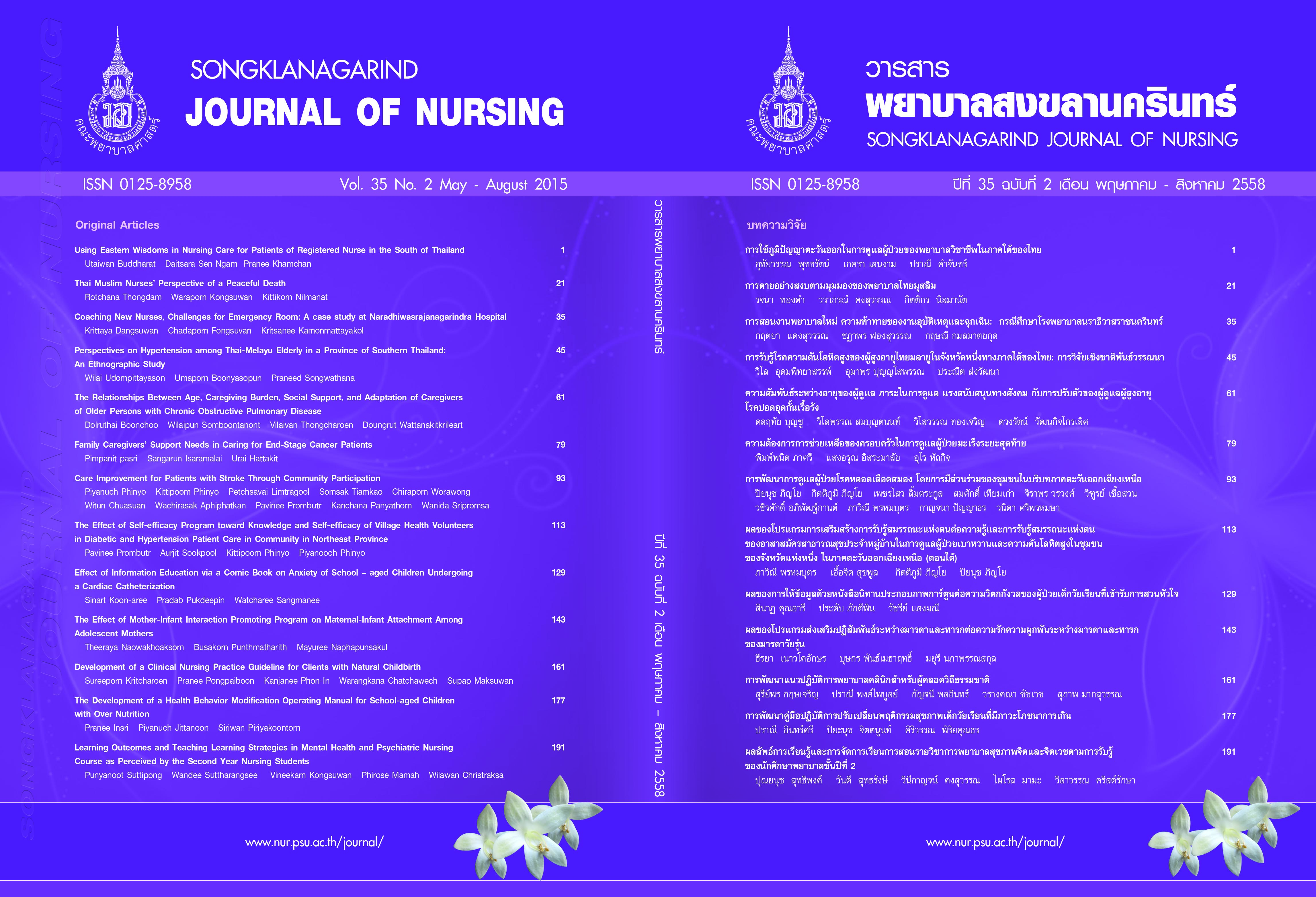Using eastern wisdoms in nursing care for patients of registered nurse in the south of Thailand
Main Article Content
Abstract
This quantitative research aimed to explore using eastern wisdoms in nursing care for hospitalized patients in the South of Thailand. The subjects were 409 registered nurses. Data were collected using a questionnaire which consisting of 5 parts; 1) demographic data, 2) factors influencing the application eastern wisdom, 3) method of using eastern wisdom, 4) kinds of eastern wisdoms, and 5) problems and obstacles of using eastern wisdoms in nursing care for hospitalized patients. The questionnaires were tested for content validity and for the reliability of questionnaires in the second part and the fifth part, yielding Cronbach’s alpha coefficients of 0.83 & .71, respectively. Data were analyzed using descriptive statistics, chi - square for personal factors related to eastern wisdoms, and measure the association of both with cramer’v coefficient. The results showed that several kinds of eastern wisdom had been used such as; herbs applied for pain relief, fever, and allergic urticaria, massage applied for paresis, paralysis, numbness in finger and toes, and osteoarthritis of the knee, religion for psychological problems, and so on. The most important problem of using eastern wisdom is an unclear hospital’s policy. Personal factors related to the use of eastern wisdoms in nursing care for the hospitalized patients in the South of Thailand were age, workplace, nursing curriculum, and self interesting. Conclusion: many kinds of eastern wisdoms were used in nursing care for hospitalized patients in various ways and related to personal factors (p < 0.05).


